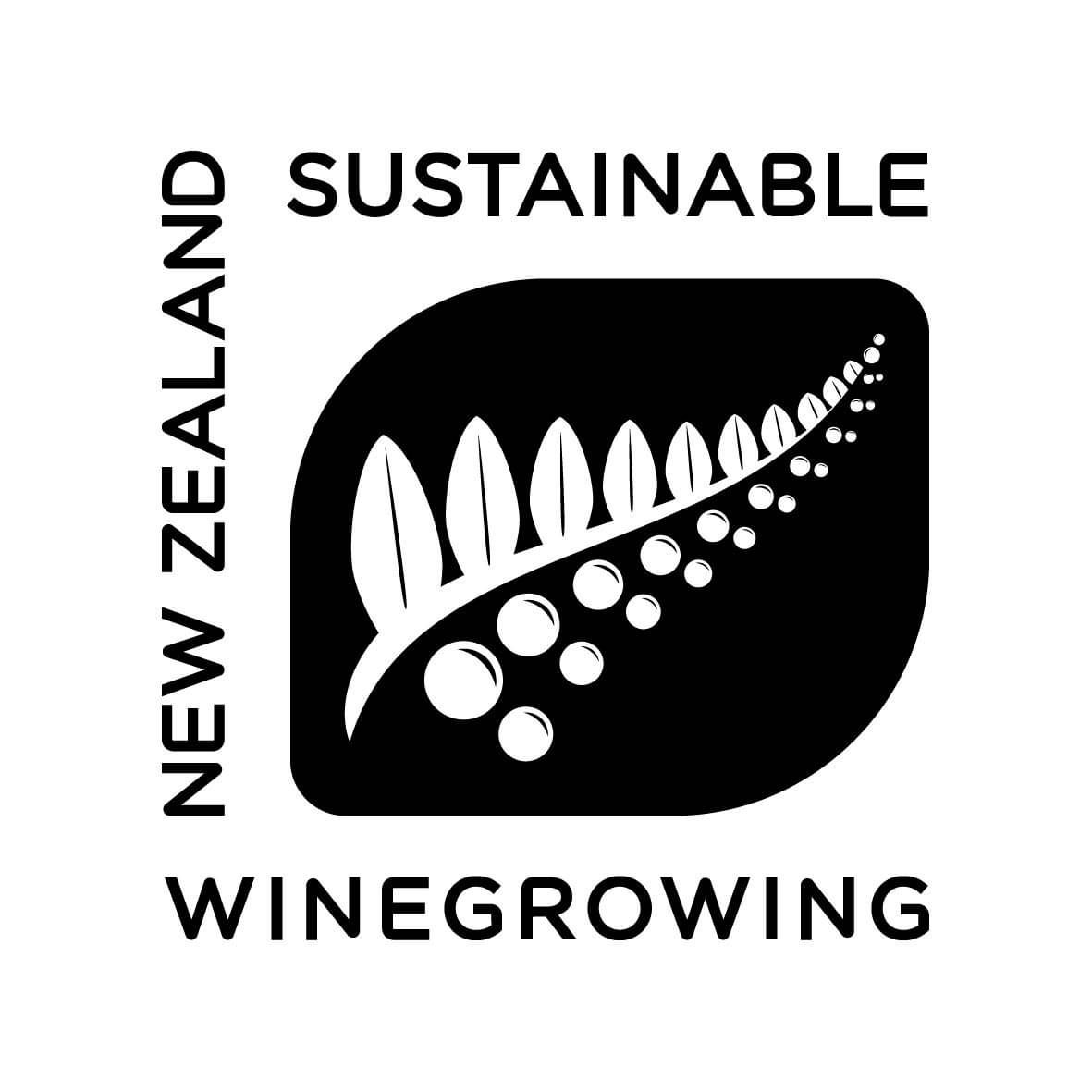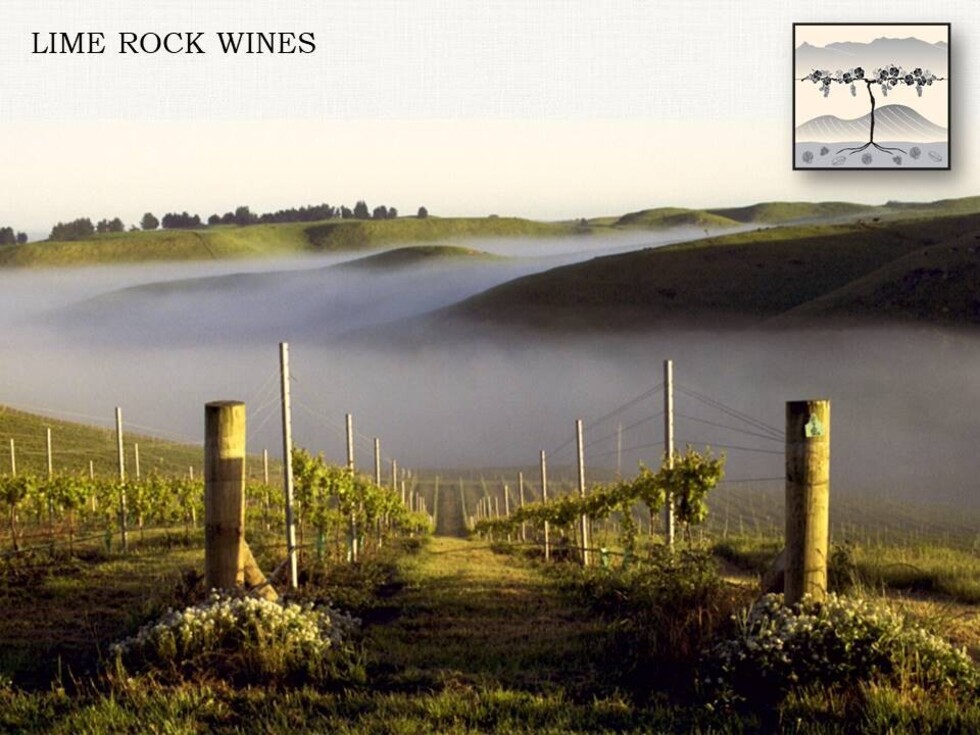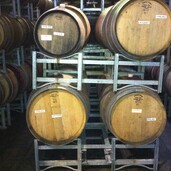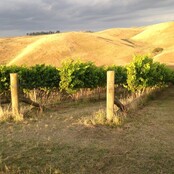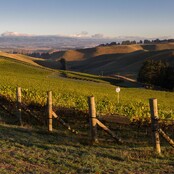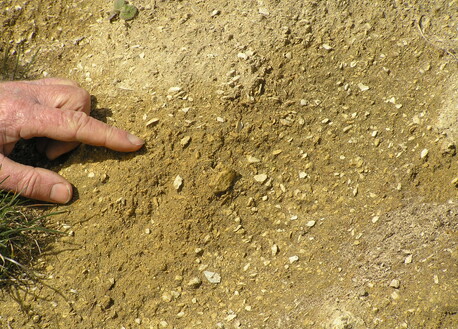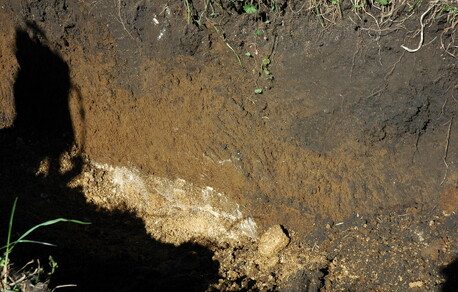Lime Rock vineyard
We have sold the vineyard and it has been pulled out by the new owners (Rosie's brothers) and returned to pasture. We still have plenty of wine in the warehouse though. These notes reflect a history on the wine we made from this incredible site.
Limestone, altitude and distance from the present ocean make our LIME ROCK vineyard site different from others. On these high north-facing Central Hawke’s Bay limestone hills we have found a niche for our vines. Graduation in soil depth down the slope, different aspects of the hills along with nine different clones, many on own roots, are factors that add to the complexity of our wines.
Complexity - from the vineyard to the wines (Soil to Glass)
Elevation - 230-270m altitude results in cooler sites and steep slopes that allow cool air to drain and prevent frosts.
Soil types - loess (wind blown sediments) over crumbly limestone with shallow depth at the hilltop to deeper soils at the base. The shallower soils produce wines with more elegance and the deeper soils more muscular wines.
Micro-climates - top, mid and bottom slopes result in different growing condition for the vines. We pick accordingly, picking the top slope first.
We believe the limestone base, together with other factors such as resident yeast strains, produces wines with a characteristic minerality and good length on the palate.
Most vines are on their own roots (not grafted on American rootstock) and better reflects the sense of place. Pinot Noir has a complex DNA pool and, on its own roots, adapts to its place, especially on slopes.
Geology
The underlying limestone base is derived from an old sea bed that extended to the NE some 2.5-3 million years ago. The crumbly limestone structure, called Coquina (the name of our barrel fermented Sauvignon Blanc) is made up of crushed barnacle shells, embedded with large scallop and oyster shells that form the base of our logo.
Soil
The Ruahine Ranges are still growing but water erosion of the rocks has deposited fine sediments on the plains, and wind has deposited loess (wind blown sediment) on the hills. This silty layer has good water holding properties and any excess moisture drains down the slope or into the limestone, consequently irrigation is seldom used. The loess layer is covered with a shallow covering of volcanic ash from past eruption events and provides a natural fertility. We do not have to use nitrogen fertilizer to maintain our vines and water use is very minimal, with some blocks not being watered for over 7 years. A very sustainable situation. We do not cultivate the soil as this would have a negative influence on the vineyard ecosystem as it disturbs the soil structure and soil-biota, particularly mycorrhizae.
Microclimates
The hills and slopes provide a diverse environment with increasing soil depth down the slope. The slopes also allow cold air drainage. so frost is not an issue. There is always some wind movement through the vines that minimizes the risk of fungal diseases. This diversity within the landscape adds to the final complexity within the wines. The grapes are all handpicked, starting with the top of the hills, mid-slopes and then lower slopes.
Pinot Noir, on its own roots, develops character changes with the slope. More fine and elegant at the top and more mascular and strenth at the bottom with the deeper soil profile.

Viticulture
The 20 ha vineyard, with plantings covering 9ha, is mostly Pinot Noir with 9 different clones, mostly on own roots, and newer plantings on rootstock.
All vines are trained on VSP trellis system, with about 2500 vines per hectare. We aim to have yields of less than 2kg per vine. Shoot thinning and leaf plucking are done by hand and any green bunches removed before veraison (when grapes change colour).
Our reserve label (White Knuckle Hill) comes mainly from a very steep slope planted with clones 777, 667 and Abel.
Other varieties include Pinot Gris, Sauvignon Blanc, Merlot, Cabernet Franc and some Gruner Veltliner planted in 2008.
Also have another small trial vineyard we call Secret Vineyard as it is hidden away from view. This has plantings of Pinot Noir, Cabernet Franc and Riesling.
Sustainable Winegrowing
Lime Rock Wines, since the 2010 vintage, is certfied by Sustainable Winegrowing New Zealand (SWNZ). The LIME ROCK vineyard has been certified since 2004.
SWNZ provides 'best practice' systems for environmental, social and economic sustainability in both the vineyard and the winery. More information on sustainable winegrowing can be found here.
